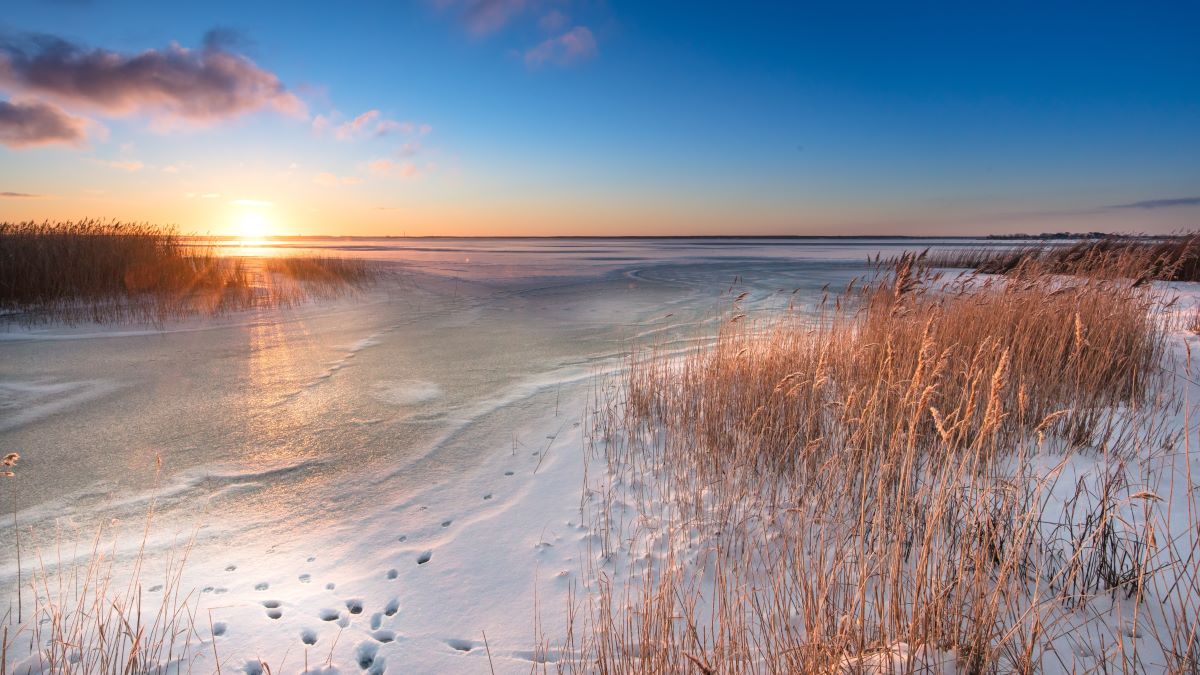Modelling a digital twin of Finland’s water resources – the DIWA flagship provides information on changes in water systems

The Digital Waters (DIWA) flagship programme focuses on Finland's water resources. The aim of the flagship is to create a digital twin of Finland's water resources, i.e. a computer model in which measurement data is entered in real time. The main focus of the flagship is on flowing waters, i.e. rivers and coastal waters.
The Finnish Meteorological Institute is responsible for the snow component of the project and its role is to improve the modelling and measurement methods of snow as well as to study, among other things, how snow affects water resources.
One of the roles of the Finnish Meteorological Institute is to study how snow affects water resources.
"For example, we want to model where the snow is and how much, how it melts and what the impact of its melting is on other water bodies or on flooding in the spring,” says Principal Investigator Anna Kontu from the Finnish Meteorological Institute.
Snow plays a major role in water resources, both in Finland and globally. For example, when snow melts, a lot of water is released at once. Changes in the timing of melting or in the amount of snowfall affect plant growth, flooding and groundwater levels during the summer, among other things.
On the other hand, snow is also a very important source of freshwater globally, which can also be used as drinking water.
"Snow and glaciers are important sources of freshwater, and one of the big problems is the shrinking and disappearing of glaciers. This prevents meltwater from flowing into rivers, which contributes to freshwater shortages in some places," Kontu says.
"The DIWA flagship focuses on modelling water resources from Finland's perspective, but in many cases the same research methods and modelling approaches can be used on a wider scale. Through this, DIWA's findings can also be useful globally."
Digital twin for scenario tracking
The digital twin of water resources can be used for many purposes.
Modelling and water monitoring can be used, for example, to support decision-making when preparing Finland's and the EU's water policy. The impacts of climate change on water bodies can be modelled as well.
The digital twin will also make it possible to explore different water-related scenarios and extreme phenomena.
The digital twin can be used to see what the consequences would be if the snow situation were different from the current one.
"For example, we can use a digital twin to see what the consequences would be if there was a lot of snow in certain places or hardly any snow at all. So we can look at what the consequences would be if the snow conditions were different from today," says Kontu.
Like other flagship initiatives, the DIWA project aims to increase cooperation between different organisations and actors.
Work on the flagship has begun this year, so the project is still in its early stages. An important part of the project is the development of modelling methods and new measurement systems. In addition, a cloud environment is needed for running models and processing large data sets.
DIWA is one of three flagship projects funded by the Research Council of Finland in which the Finnish Meteorological Institute is involved. The flagship is led by the University of Oulu and includes the University of Turku, the Department of Mathematics, Aalto University, the Finnish Environment Institute and the Finnish Geospatial Research Institute alongside the Finnish Meteorological Institute. The aim is to bring together the expertise of the institutions in the same project and to promote networking between researchers on the topic. The flagship is funded by the Research Council of Finland.
